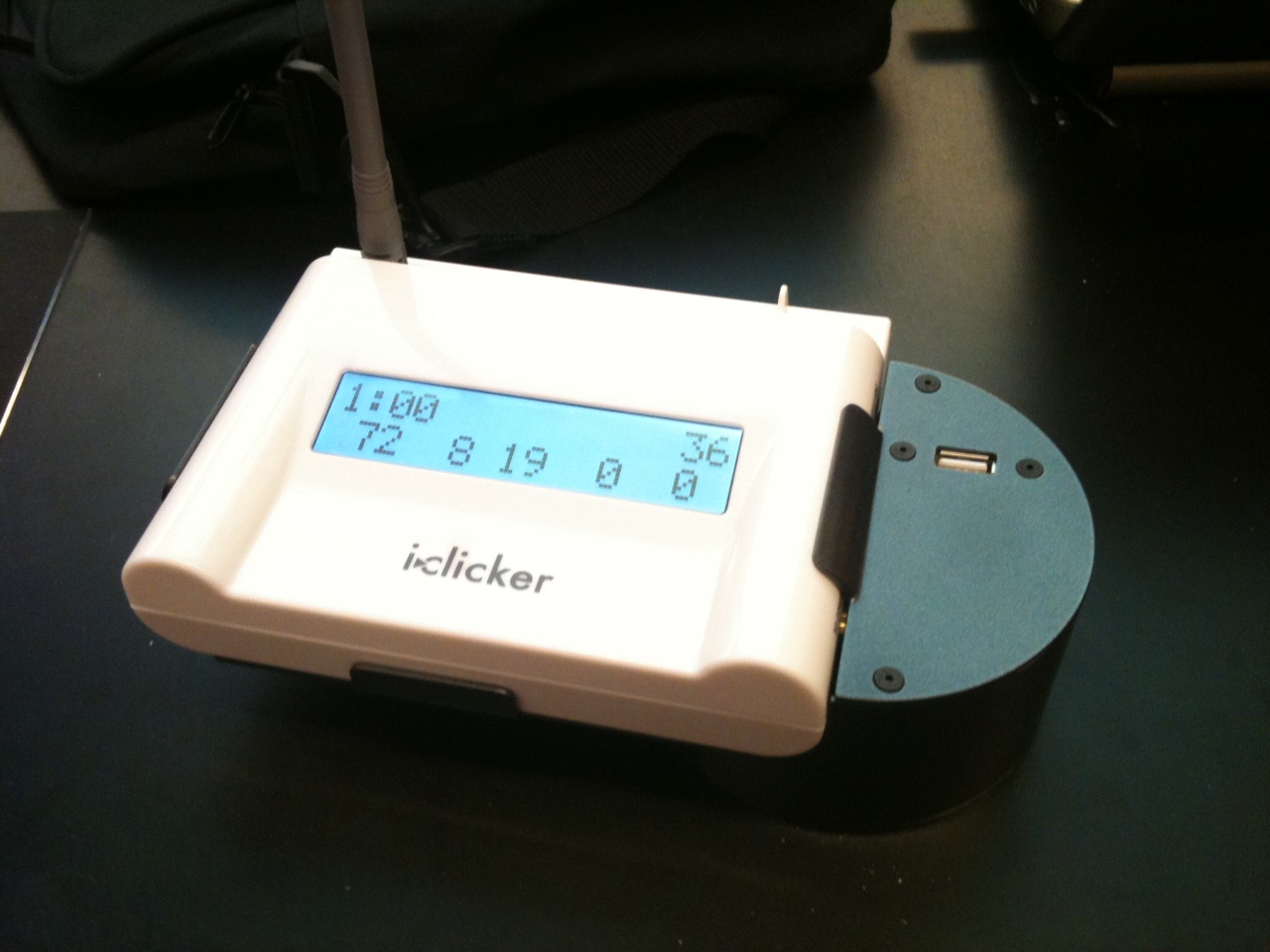The other day, I participated in a webinar run by Stephanie Chasteen (@sciencegeekgirl on Twitter. If you don’t follow her, you should.) It was called, “Teaching faculty about effective clicker use” and the goals was to help us plan and carry out meetings where we train faculty members to use peer instruction and clickers. Did you get that subtle difference: it was not about how to use clickers (though Stephanie can teach you that, too.) Rather, this webinar was aimed at instructional support people tasked with training their colleagues how to use peer instruction. This was a train the trainers webinar. And it was right up my alley because I’m learning to do that.
And if you think that’s getting meta-, just you wait…
In the midst of reminding us about peer instruction, Stephanie listed characteristics of effective professional development. She gave us the bold words; the interpretation in mine:
- collaborative: it’s about sharing knowledge, experiences, ideas, expertise
- active: we need to do something, not just sit and listen (or not!)
- discipline-oriented: If we want to be able to share, we need some common background. I want to understand what you’re talking about. And I hope you give a damn about what I’m talking about. Coming from the same discipline, like physics or astronomy or biology, is a good start.
- instructor-driven: I take this to mean “facilitated”. That is, there’s someone in charge who drives the activity forward.
- respectful: So open to interpretation. Here’s my take: everyone in the room should have the opportunity to contribute. And not via the approach, “well if you’ve got something to say, speak up, dammit!” It takes self-confidence and familiarity and…Okay, it takes guts to interrupt a colleague or a conversation to interject your own opinion. Relying on people to do that does not respect their expertise or the time they’ve invested by coming to the meeting.
- research-based: One of the pillars of the Carl Wieman Science Education Initiative (CWSEI) that I’m part of at UBC, and the Science Education Initiative at the University of Colorado where Stephanie comes from, is a commitment to research-based instructional strategies. We care about the science of teaching and learning.
- sustained over time: We’d never expect our students to learn concepts after one exposure to new material. That’s why we give pre-reading and lectures and peer instruction and homework and midterms and…So we shouldn’t expect instructors to transform their teaching styles after one session of training. It requires review and feedback and follow-up workshops and…
Alright, time to switch to another stream for a moment. They’ll cross in a paragraph or two.

I’ve got a big box of shiny new i>clicker2 clickers to try out. I’m pretty excited. I’m also pretty sure the first thing instructors will say is, “What’s with all the new buttons? I thought these things were supposed to be simple! Damn technology being shoved down our [grumble] [grumble] [grumble]” I want to be able reply
Yes, there are more buttons on the i>clicker2. But let me show you an amazing clicker question you can use in your [insert discipline here] classroom…
Good plan. Okay, let’s see: Clickers? Check. Amazing clicker questions? D’oh!
We use a lot of peer instruction here at UBC and there are CWSEI support people like me in Math, Chemistry, Biology, Statistics, Earth and Ocean Sciences, Computer Science. If anyone can brainstorm a few good questions, it’s this crew. And guess what? We get together for 90-minute meetings every week.
Can you feel the streams are coming together. Just one more to add:
My CWSEI colleagues and I frequently meet with instructors and other faculty members. We’re dance a delicate dance between telling instructors what to do, drawing out their good and bad experiences, getting them to discover for themselves what could work, (psst: making them think they thought of it themselves). Their time is valuable so when we meet, we need to get things done. We need to run short, effective episodes of professional development. It’s not easy. If only there was a way to practice…
 A-ha! Our weekly meetings should be effective professional development led by one of us getting some practice at facilitating. The streams have crossed. I’ll run the next meeting following Stephanie’s advice, modeling Stephanie’s advice, to gather questions so I will be able run an effective workshop on taking advantage of the new features of the i>clicker2. It’s a meta-meeting. Or a meta-meta-meeting?
A-ha! Our weekly meetings should be effective professional development led by one of us getting some practice at facilitating. The streams have crossed. I’ll run the next meeting following Stephanie’s advice, modeling Stephanie’s advice, to gather questions so I will be able run an effective workshop on taking advantage of the new features of the i>clicker2. It’s a meta-meeting. Or a meta-meta-meeting?
It’s not like I made any of this up. Or I couldn’t find it if I talked with some people whose job is professional development. Well, I guess I did kind of talk with Stephanie. But there’s a lot to be said for figuring it out for yourself. Or at least starting to figure it out for yourself, and failing, and then recognizing and appreciating what the expert has to say.
And you’ve read enough for now. Watch for another post about how it went.








